Among polite society, a few subjects are invariably touchy, threatening to flare into heated debate. Politics. Religion. And don’t forget to add one more topic to that list: Texas barbecue.
Whether you spell it barbecue, barbeque, bar-b-que, or just bbq, one thing’s for sure: barbecue is more than just a meal in Texas, it’s a mantra.
Although barbecue unites diners at family reunions, church functions and political fundraisers, these smoky meats can ignite endless argument. What is barbecue? Which is the best cut? What is the best wood? Where are the best pits? Sauce or no sauce?
Holy smokes!
Table of Contents
Defining Texas Barbecue
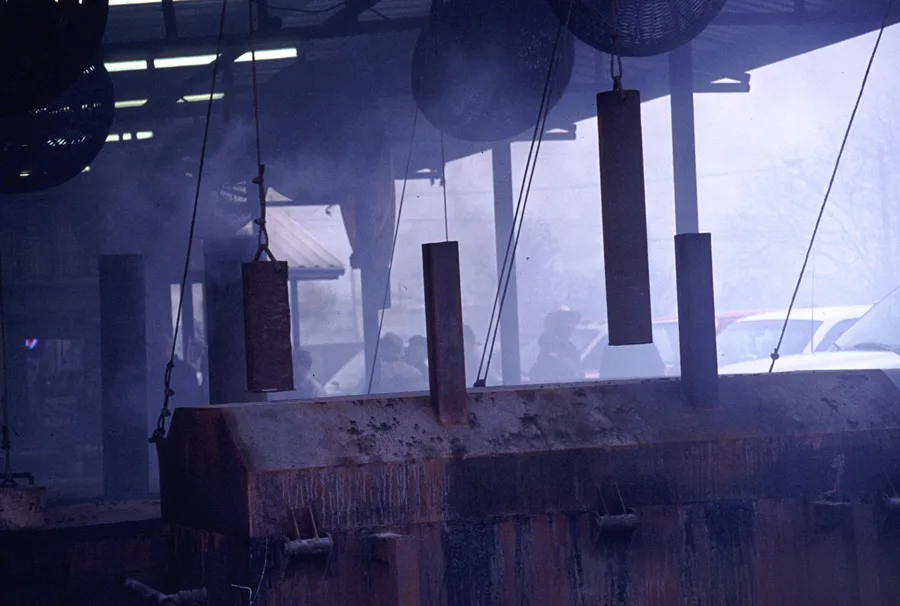
Defining Texas barbecue is no easy task. In a state than spans over 266,000 square miles, this is a debate than reaches from the bayous of East Texas to the Panhandle prairies to the border communities on the Rio Grande.
Each region, divided by hundreds of miles, feels the influences of other culinary cultures, from Southern to Tex-Mex to Southwest.
When you’re traveling Texas, don’t be alarmed if you see a hazy blue smoke wafting above the horizon. What you’ve got is a beacon to a roadside barbecue joint: a symbol of Texas as true as Longhorns and Longnecks. Best of all, this token of Texas transfers to backyard barbecues no mater where your smoker may be located.
Throughout Texas, where cattle are king, that edict means search for good beef. “At a Texas barbecue, no one ever has to ask, ‘Where’s the beef?'” said Houston-based C. Clark “Smoky” Hale.
Texas Barbecue Terms
Want to sound like a barbecue buff? Here are some terms to “parlez ‘que”:
- Baby back ribs — Ribs from a young hog; usually the most tender of the rib cuts.
- Barbacoa — Primarily served in South Texas, this special type of barbecue is the head of a cow wrapped in cheesecloth and burlap, slow smoked in an earthen pit.
- Beef clod — Part of the shoulder or the neck near the shoulder; used like brisket.
- Brisket — Chest muscle of a cow. This typically tough cut requires a long, slow cooking period to break down the fibrous meat.
- Country-style pork ribs — Backbone of a hog. These ribs contain large chunks of meat and sometimes resemble a pork chop.
- Marinade –A seasoned liquid mixture in which meat is soaked prior to cooking. Acidic marinades such as those containing lime juice help tenderize meat. (Note: Acidic marinades should never be used in aluminum containers.)
- Rub — Dry ingredients rubbed onto meat to season it during cooking.
- Sauce — The flavored liquid used as a condiment after the meat has cooked. Slab of ribs–A whole side of the rib cage.
- Smoke ring — The telltale pink ring in meat that authenticates it as barbecue.
- Sop — A basting sauce applied during the barbecuing process.
- Spare ribs — The lower portion of a hog’s ribs.
Texas Brisket
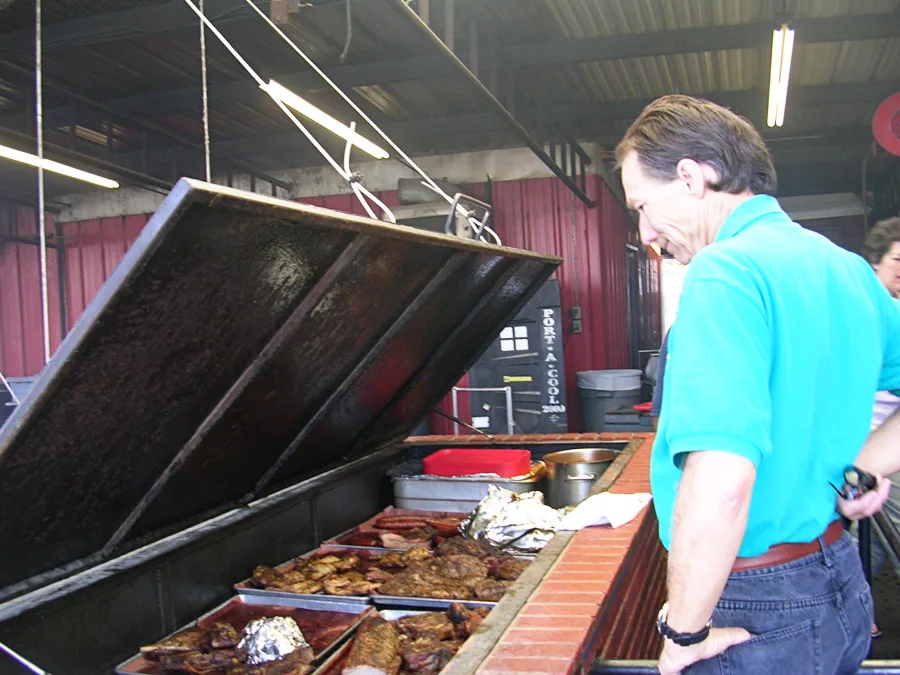
Nonetheless, every Texas barbecue joint, whether the jukebox is playing Cajun or conjunto tunes, features beef brisket. “Texans love that tough brisket more than any other outdoor cooks that I know,” noted Hale. The slow-cooked meat is sliced and served up with sides of pinto beans, cole slaw, potato salad, and white bread, as well as tomato-based barbecue sauce.
Making the brisket a success is the mark of a true Texas barbecuer. Glenn A. Nicholas of Arlington, one of the founders of the Lone Star Barbecue Society, noted that the first step to good brisket preparation is the selection of good meat.
“I feel like a good quality meat is essential. I prefer a brisket with a lean side with some marbled fat. I usually cook at 10 to 12 pound brisket. On the fat side, I steer away from knobs of fat. I put the fat side up so it melts down through the meat and keeps it moist.”
Regional BBQ Specialties
Following the brisket, menus might involve some regional variation. Cabrito or barbecued goat is often spotted in the western portion of the state while lamb is a more common offering in East Texas.
Cooking styles can vary as well. “In the state of Texas, barbecue is very regional. East Texas uses a lot of hickory because it’s available. South and Central Texas uses pecan and oak, and West Texas uses mesquite,” said Nicholas.
“A competitive barbecue cook has a problem with this because one area may love a sweet, spicy rib while another likes a plain rib. It varies from area to area and it’s tough to find what area likes what. I often tell cooks to go to the local barbecue place to see what they’re producing.”
Hale noted that the varied taste of Texas barbecue “is not only regional, it is individualistic. It is a personal statement. And, there is a big difference in the techniques of folk who learned from the old basters and those who started out in the ‘Barbecue Boomer’ generation.”
Barbecue Belt

Part of that variety results from the fact that, unlike other barbecue hot spots like Kansas City and Memphis, Texas has no capital of ‘que.
Instead it’s a title shared throughout a part of the state termed the Barbecue Belt, stretching from Llano to the west to Schulenburg to the east.
This smoky swath slices through the capital city of Austin, but also extends to barbecue hotspots such as Elgin, Lockhart, Taylor, Llano and Luling, communities where barbecue is the hottest action in town.
History of Texas Barbecue
Tending the pit is a longstanding tradition that dates back to early Texas days of meat markets and butcher shops. These merchants were determined to find a use for cuts that weren’t selling.
On the weekends, they began smoking those quickly aging meats, hoping to make them more palatable with an infusion of smoke.
It worked. Like a fragrant billboard, the smell of barbecue soon permeated the small towns and captured the attention of those doing their Saturday marketing. Farmers and ranchers in town for weekend trading came by and found an inexpensive lunch served up on the only plate a butcher had on hand: butcher paper.
Eventually, farm and ranch families began making the meat market a regular weekend stop, tailgating off the back of their horse-drawn wagons.
Soon some meat markets began to put up a few picnic tables for customers. Today the best joints still have a picnic table or two. Some still serve their product on butcher paper.
Rules of Texas Barbecue
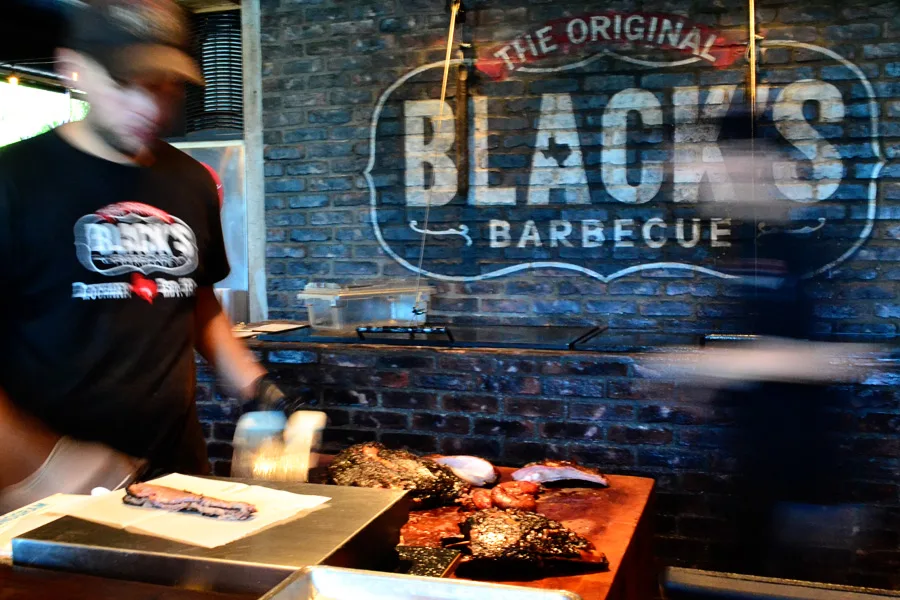
The rules of Texas barbecue are few, whether produced in a smoky restaurant, a backyard cooker, or a competitor’s rig.
First, take your time.
Professional pitmasters spend as long as 18 to 20 hours to cook a brisket to smoky perfection, even when thermometers top 100 degrees.
Cookoff competitors are known to stay up through the night stoking their smokers. “Relax, getting uptight makes the meat tough,” advised Hale. “Keep the temperature in the grill about 215 degrees and learn how to have fun. The real measure of a master barbecuer is how well he uses the pleasure of long cooking periods.”
Second, Texan barbecue is always smoked, never grilled.
To really set a fire under a barbecue buff, confuse “barbecuing” with “grilling.” True Texas barbecue is accomplished in a closed smoker, a treasure chest that seals in the meats with the smoke to ensure the union of the two.
“Sauces may vary from region to region, but barbecue is meat cooked in the dry heat of wood coals at around the boiling point of water,” emphasizes Hale.
Let’s set the record straight: grilling may be good, but to be labeled Texas barbecue the meat must be cooked in a closed contraption to hold in the smoke that imparts its flavor to the meat. Grilling is done in the open where the smoke dissipates before fully infusing the meat. Grilling is also accomplished quickly, while barbecuing takes plenty of time, sometimes an entire 24-hour day.
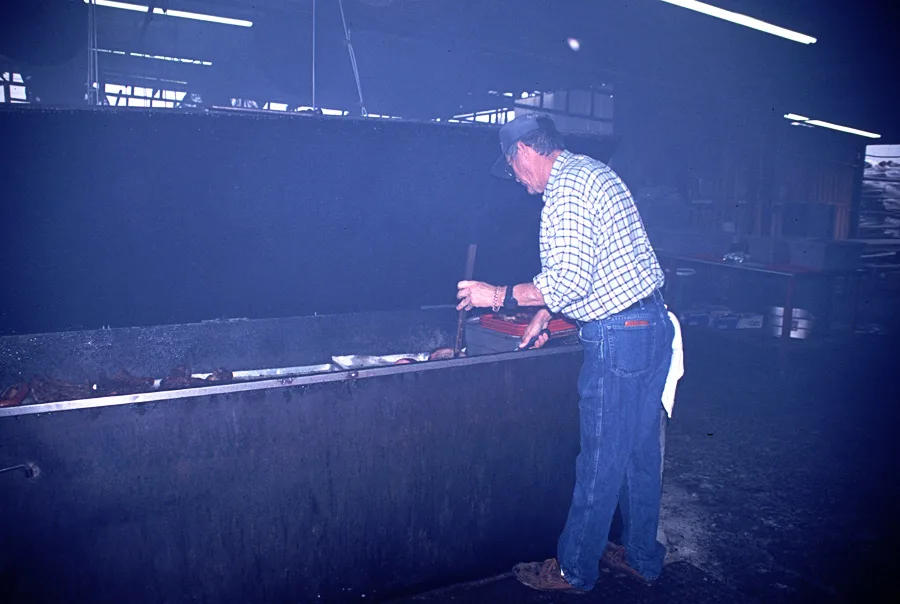
Just how the smoker should be arranged, however, is the topic of yet another ‘que controversy. In the community of Llano, pitmasters don’t smoke their meats, but instead use indirect barbecuing.
Wood, primarily mesquite, is placed in the firebox and allowed to burn down to coals, then it’s transferred to the main section of the pit beneath the meat. Here it flavors and cooks the meat to perfection, imparting a delicate smoky taste that is subtler than that achieved through ordinary smoking.
Barbecue Sauce
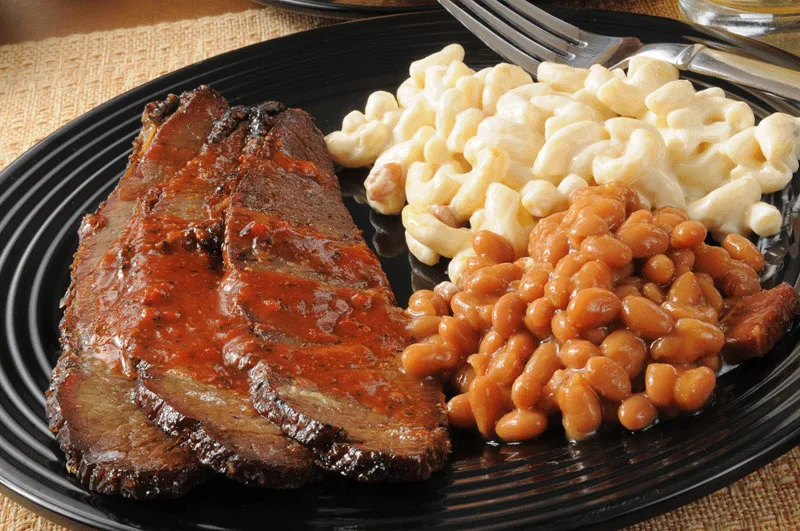
But with those ground rules in place, it’s a cook’s free-for-all when it comes to the preparation and presentation of the meal. In researching barbecue across this vast state, we also saw a myriad of ingredients tossed into rubs and sauces.
Beer, cider vinegar, mustard, Worcestershire, brown sugar, Chinese chili oil, celery seed, white vinegar, soy sauce, pancake syrup, honey, apple jelly, gin, rum, Creole mustard, cayenne pepper, molasses, chipotles, Jamaican PickaPeppa sauce, orange juice, and even cranberry sauce have made appearances in Texas barbecue sauces and marinades.
One pitmaster explained his varying recipe by, “It depends what I’ve got on hand” while another said his recipe “depends on how much beer I’ve had to drink that day.”
One point that cooks will agree on, however, is that the barbecue sauce should be held back until the last stages of barbecuing to prevent burning.
While many cooks continue to mop the meat with a spicy marinade during the smoking process, the actual barbecue sauce sees the meat only during its final minutes in the flames, if at all.
Instead, cooks baste the meat with flavorful marinades to keep the meat moist in its trial by fire and to impart a unique taste. “Texans are deep South traditionalists in their use of basting and finishing sauces,” points out Hale.
Many barbecue joints dish up their meat right of the smoker, sans sauce, with the tomato-based concoction served on the side, usually accompanied by a shaker of hot peppers soaking in vinegar to add a tangy kick to the meal.
Rubs
Rub recipes are similarly eclectic. These mixtures of dry ingredients, often heavy with garlic powder, chili powder, and black pepper, complement the meat’s tastes without confusing the palate.
Wood
Wood is another matter of personal choice–and controversy. Oak, hickory, pecan and mesquite chips are the choices of many Texas pitmasters, often in combination.
No two pitmasters will agree on the ideal wood. “Texans had to overcome severe obstacles. Like, learn how to cook with an inferior wood and noxious weed, mesquite. It makes good hot coals for grilling a steak, but is too strong for the long cooking times in barbecuing,” said Hale.
“I use mainly mesquite,” points out Glenn Nicholas. “It’s fairly available and it’s one I love to use. I like to use some hickory when I’m cooking pork. I feel like I get a bitter taste if I use too much hickory. I like to use pecan when I cook chicken.”
Backyard cookers using charcoal can impart the woodsy taste in their meats as well. “You can get a good flavor out of charcoal, but when I use charcoal I use some chips, soak them in water, and throw them in because I feel like the taste is vital.”
The Lone Star Barbecue Society founder often puts the wood chips in a can in the smoker to help impart the meat with the wood’s taste.
